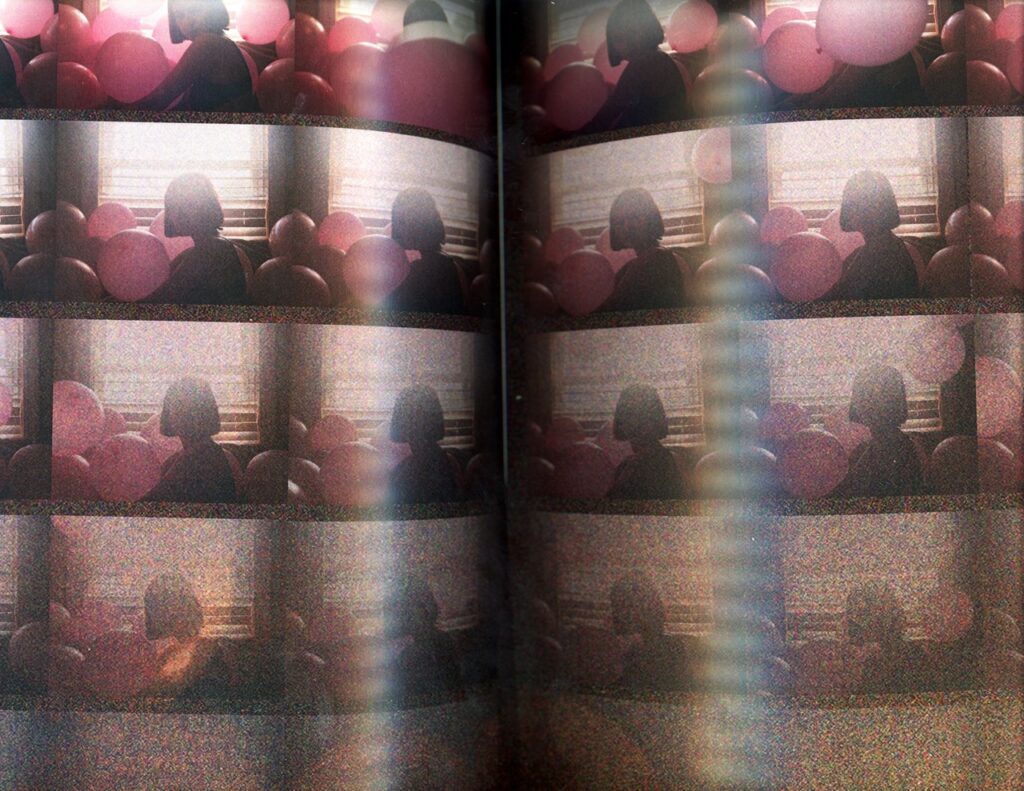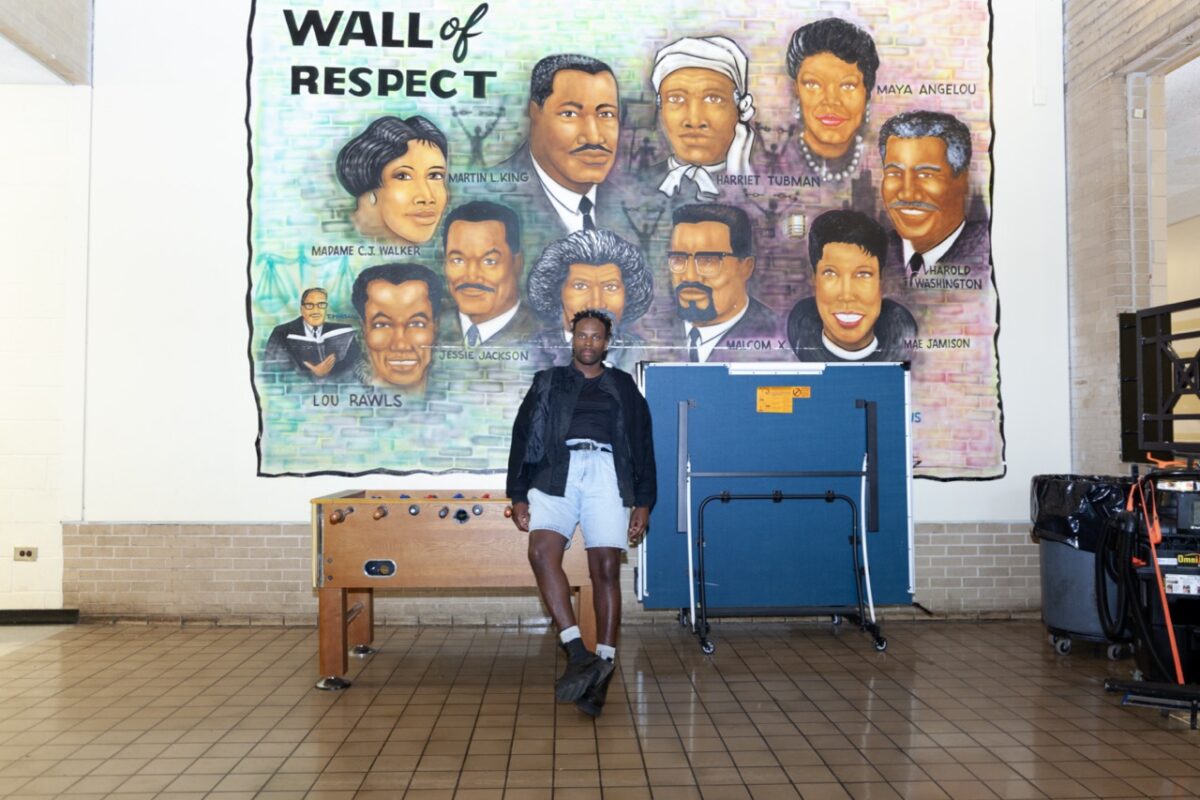I met up with Kendall Hill, a South Side-bred, Bucktown-based writer and photographer at Swig in Wicker Park on a Tuesday night. At that point we were pretty familiar with one another: just a few months prior, a mutual friend of ours brought Kendall along to a pregame I hosted before a show at Schuba’s Tavern. When he walked through my front door we had a Spider-Man-meme moment. It was the classic ‘I know who you are and I keep seeing you around, but we’ve never spoken’ scenario. Soon after that, we linked for drinks at Dorian’s to get the download on one another: growing up on the South Side, going to high school far from home, playing a role in the city’s institutions as young Black men, and trying to keep our creative impulses nurtured. And then Kendall told me about his plans to publish his first book, FEVERDREAMS, available for presale on June 21.
I’ve been a fan of Kendall’s photography for years. I caught wind of him when he was a fellow at Filter Photo, and have followed his work as the Student Programs Coordinator for CPS Arts, where he plans events and arts engagement for students.
There’s a fleeting quality to his visual language that feels like nostalgia in some cases, and escape in others. It’s said that one of the reasons we dream is so that the brain can consolidate our memories and sort through itself. There’s a suspense in Kendall’s photography that prompts assortment. Blur, double exposure, lens flares, and film grain create moments (or the illusion of moments) that demand explanation. There’s a mystery to his images, even when the subject is a clear, lone focal point. And Kendall himself has a bit of a mysterious allure, with serious eyes and a strong presence. But he’s actually quite a warm and sincere person, and in our pre-interview at Swig plus a few follow up conversations, I was able to get a clearer picture of the inner world Kendall has built for himself.

Piggybacking off of our conversation in Swig, can you explain where you’re from and some of your early inclinations toward writing?
I grew up South Side Chicago, all around the Southeast Side of Chicago for the most part; Chatham, Auburn Gresham, Calumet area. I began my life writing, that was really the first arts medium I engaged with kind of seriously, I guess at the time I didn’t consider it art, but it was, obviously. I did a lot of poetry competitions, and oratory, spoken-word stuff at church. And I really gravitated towards doing things like that. I wrote a bunch of young author competition books in school, and always was writing a lot. I had a blog, you know, all those types of things. But I didn’t really think of writing as an art at the time. I kind of didn’t really until after I started doing photography and stuff more. But yeah, that’s when I started writing.
Why did it take photography to get you to consider writing as a medium in and of itself? And I’d add writing, but also words.
I guess I didn’t think it wasn’t not an art. I just didn’t think it was practical, like, I didn’t see how it fit into a career, as with most things in art at the time before college. I kind of was just not sure what that would mean for me at the time. So, I engaged with it really creatively, because I didn’t really think of it practically, you know, I kind of just thought of creative writing as a thing that could be as expressive as possible, because that was the preface of it for me. It was just like, ‘How do you just have an outlet?’ not ‘How do you make money?’ I didn’t really start thinking until I got to photography, but writing was always kind of just, like, real expressionism.
That really comes through in the book, and it’s why I said writing and words, because there are moments where you’re using short clauses, singular words, or two word phrases—and you’re using typography and the words are winding and take on different shapes. It feels very childlike, but it’s obviously an intentional stylistic choice. So just talk about your use of words.
At this point in my writing journey I’m really trying to make people feel things without always having to read them. Which is kind of weird. It’s like you would think that as a writer, you just want to be more intentionally to the point. But I think because I’ve been doing so much visual art the last, you know, decade almost, I try to think about how to say things with words that are visually telling, rather than just specifically telling. I’ve written so many things like, I feel like I’ve gone through genres and different types of writing styles, and none of them were bad at all. I just can see my youth in them a lot. I think about stuff I wrote in college, and it was so detailed, and over the top, right, like really expressionism. And I’ve just gotten to a point where I’m kind of, like, how do I say things to make even the way that you’re putting words together make something new in someone’s mind? You know, there’s so many combinations of words that you can use, and oftentimes I’m just trying to combine them or lay them out on a page differently, to feel differently to whoever’s [reading] it. And photo helps a lot with that too. You know, the photography behind them also helps a lot, but yeah, really just trying to use words as another asset to make images.
What is FEVERDREAMS about?
This book is about the here and the now and putting a stamp on this time and place in my life. But it’s also about how dreams and ideas can become a reality. In a metaphorical and literal sense. Every photograph and chapter in the book comes from thinking bigger than what was right in front of me. It’s a place for us to not forget these moments of youth, or the brightness that comes from those times.
Talk about memory. Talk about dreams. And talk about how these memories comprise the dreamscape you’ve created in this book.
I think that those two concepts, memory especially, are just really obvious first thoughts when it comes to photography in my mind. Photography is able to hold memory, of course, right? And writing is able to also hold memory. But neither of them are necessarily always true. And like, that’s really where this idea came from. Because it’s my first book, so I really wanted to capture all of these ideas and memories I’ve had and moments that I had over these last, really, ten years [of] shooting photos. But like, it wouldn’t hit as effectively to just tell the truthful story of what was going on in all these pictures. To me, it made more sense to make a very real metaphor, like a very real thing that people can connect to, but it’s so out there that you can only really think about what is the metaphor of this. Even I don’t know the metaphor of these pictures. There’s so many people who are featuring the book right? Some of them I talk to still. Some of them are best friends. Some of them I haven’t talked to since these pictures. There’s all of these memories still wrapped up in me, trying to decode what they mean to me on a very personal level. And writing about it in this creative-dreamscape-memory way is the closest thing to like, trying to understand those things in my mind too, and like, best figure out what it means to me. Or like, what does the collection of all these pictures around this similar theme of water [mean]? Like, how does that really interact with my mind. So I think that the creativity of the dreams and the memory really just allowed me a space to play with those ideas.
You mentioned friendship, and that’s very well-represented in the book. All of these stories are about the main character’s interactions with other people, but there are moments of self-reflection in the book too. Do you see a central theme in this book being about learning yourself through other people and then reaching a point of clarity on the self?
Absolutely. That’s really what it’s getting at. It’s like learning yourself through other people, which I think we all do, you know without knowing it or not. And then like, reaching this point of Nirvana, of like, talking to yourself in a dream. And then being able to be alone on a beach and wanting to interact with your dreams by yourself. Or just getting to this point of self confidence through knowing who you are. You can know who you are through your experiences, [and] your experiences most of the time do have your friends [and] your family involved in them. So using friends is a way to understand something through all these crazy experiences and metaphors.
Having grown up on the South Side but moved to other places in the city, what would you say you still carry with you?
It’s weird but I still have this hunger to wake up everyday and make my moments and opportunities worth it. It’s actually embarrassing how early I wake up and get busy sometimes. I lived South Side local until I was twenty-two, but my life really started to shift to the north when I was in high school. Most days and weekends I traveled at least an hour, most times by bus or train, to go learn or hang out with the people I wanted to. My parents let me use the car on weekends but they never drove me anywhere. It felt like even then, I made myself really work to get to this idea of “worthwhile” in my mind. Which is totally still who I am now it feels.
What does it mean to be a Black male exploring this work and these forms? Do you feel like you’re pushing certain boundaries?
For the past few years I’ve been focusing on this idea that my work, and the art of all Black creators and curators, contributes to this collective history we are all writing for the future to look back on and be inspired from. My individual actions don’t matter unless someone else is inspired enough by them to create their next idea—and sometimes, the one who needs inspiring the most is me. Some days I feel like I’m pushing boundaries. Most days I feel like I’m trying to discover my most authentic self, and figuring out how being more of me can help others be more of themselves.
FEVERDREAMS (DOLLHOUSE, 2023), is available for presale at www.kendall-hill.com/shop.
Malik Jackson is the Weekly’s interim executive director.

